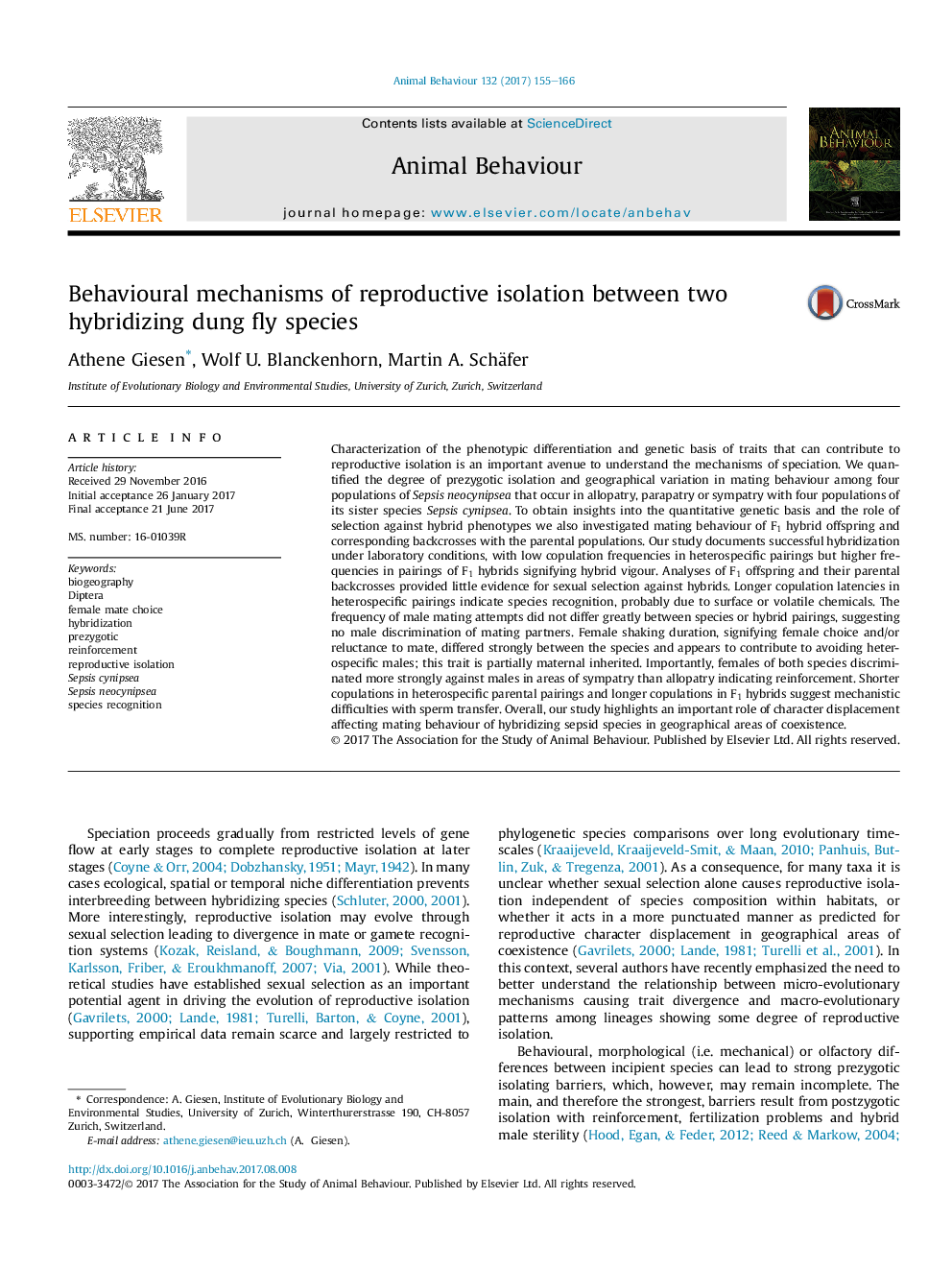ترجمه فارسی عنوان مقاله
مکانیزم های رفتاری انزال زودرس بین دو گونه هیبریدیزه می شود
عنوان انگلیسی
Behavioural mechanisms of reproductive isolation between two hybridizing dung fly species
| کد مقاله | سال انتشار | تعداد صفحات مقاله انگلیسی |
|---|---|---|
| 130405 | 2017 | 12 صفحه PDF |
منبع

Publisher : Elsevier - Science Direct (الزویر - ساینس دایرکت)
Journal : Animal Behaviour, Volume 132, October 2017, Pages 155-166

